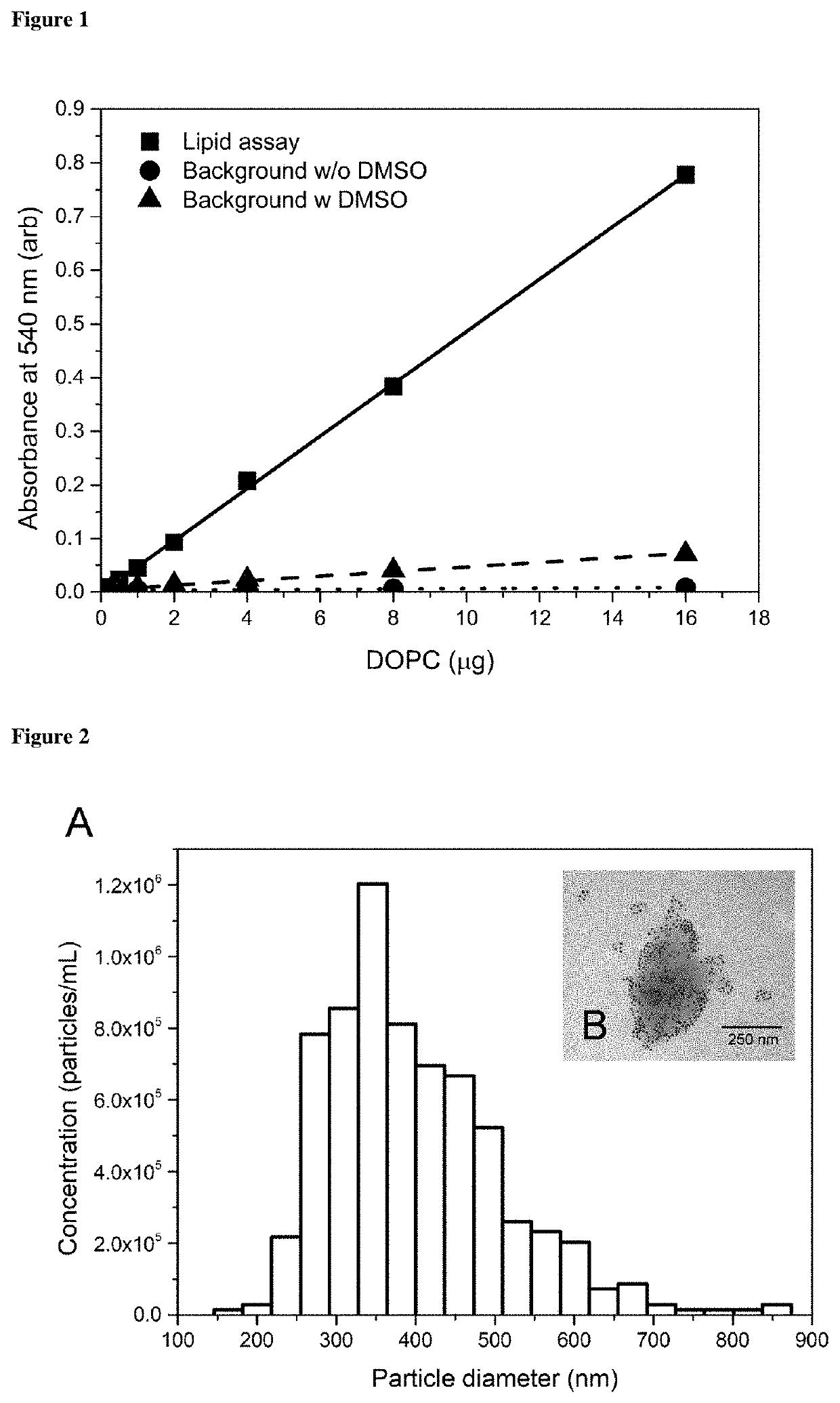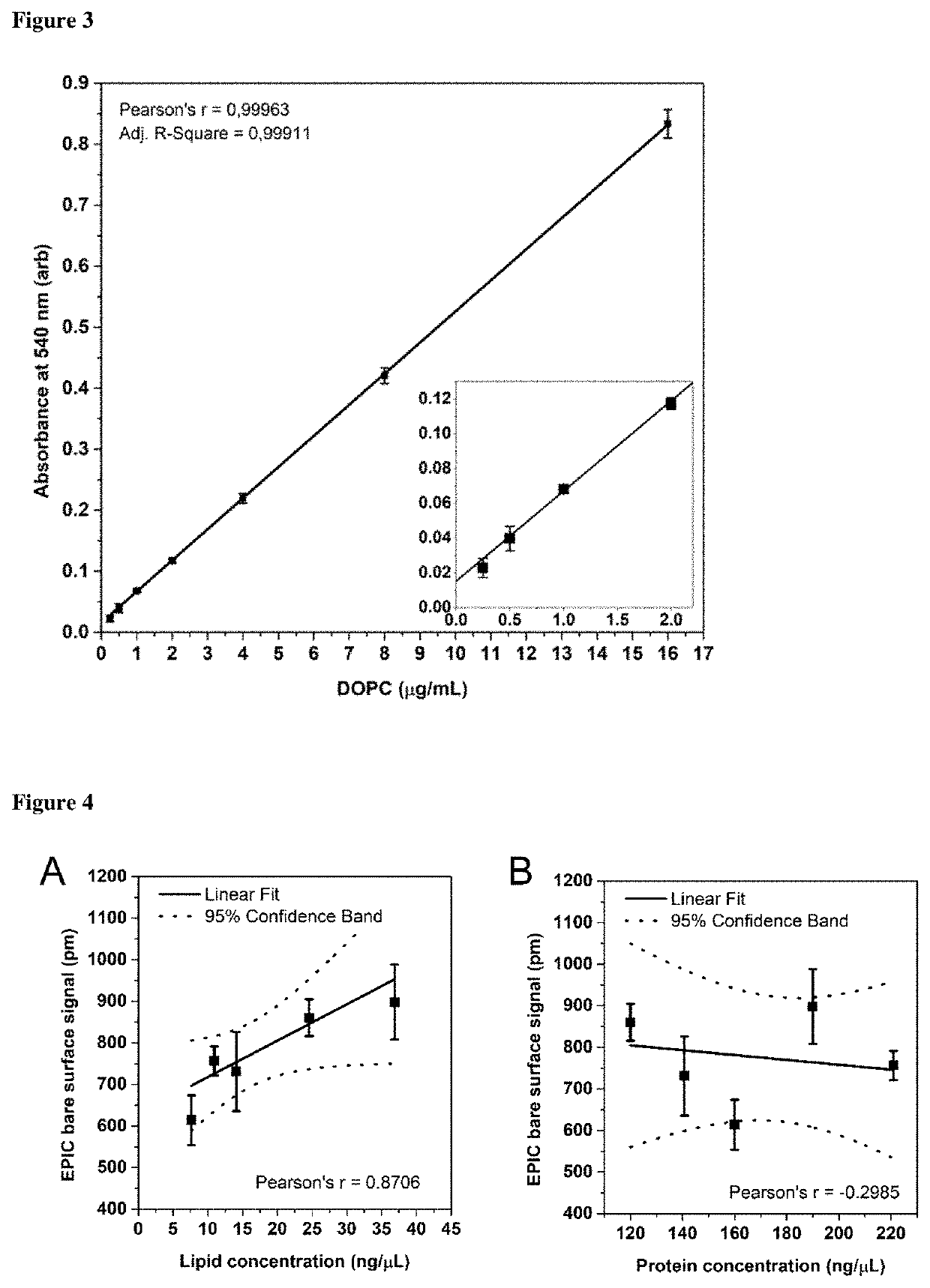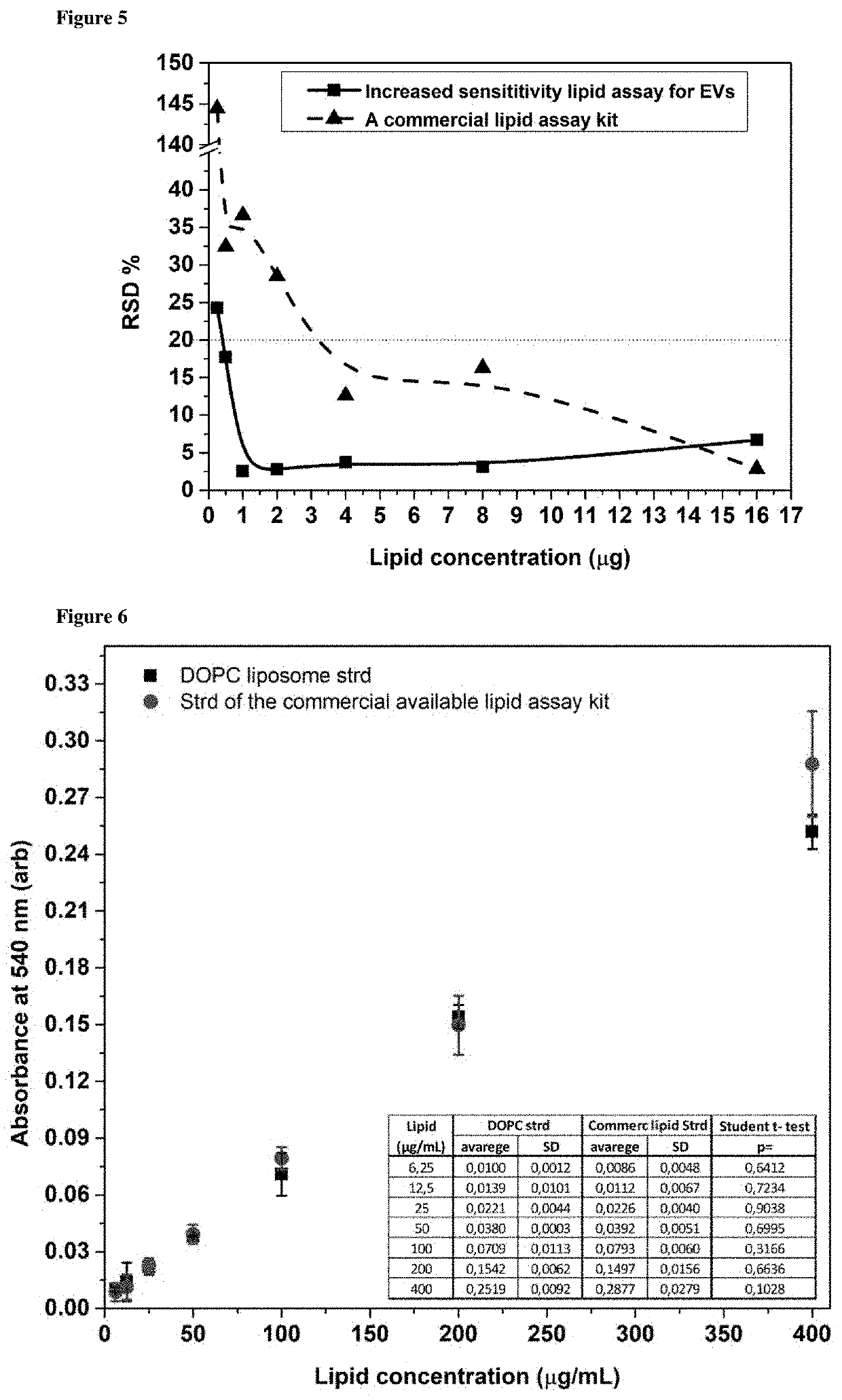Method for determining the lipid content of extracellular vesicles
a lipid content and vesicle technology, applied in the field of extracellular vesicles, can solve the problems of insufficient free of co-isolated proteins/protein aggregates in ev preparations to make such approaches, and the availability of standardised quantification approaches for reliable and reproducible standardised quantification of evs is limited
- Summary
- Abstract
- Description
- Claims
- Application Information
AI Technical Summary
Benefits of technology
Problems solved by technology
Method used
Image
Examples
example 1
s
[0087]AC16 human cardiomyocyte cell line (SCC109) was purchased from Merck and was cultured according to the instructions of the manufacturer. Before EV isolation, AC16 cells were differentiated according to Davidsons work [11]. Cells were cultured in tissue culture flasks coated with 0.02% gelatine (EMD Millipore) and 5 μg / mL fibronectin (Gibco) up to confluency. Once the cells reached confluency, they were cultured for an additional week in DMEM / F12 medium supplemented with 2% horse serum and 1× Insulin-Transferrin-Selenium (all from Gibco). EVs were isolated from serum free conditioned medium.
[0088]H9c2 (2-1) BDIX rat heart myoblast cell line was ordered from ECACC through Sigma-Merck. Cells were cultured in DMEM medium (Sigma) supplemented with 10% FBS (Gibco), 1% MEM Non-essential amino acid solution (Sigma), antibiotic-antimycotic solution (Gibco); 2 mM L-Glutamine (EMD Millipore) and 3.51 g / L D-Glucose (Sigma). Before EV isolation, H9c2 cells were differentiated according to...
example 2
ation—Isolation from Conditioned Cell Culture Medium
[0091]EVs were isolated based on Osteikoetxea et al. [10] with minor changes. Prior to isolation, cells were washed three times with PBS, and EV production was allowed to take place for 24 hours in serum-free medium or in the presence of 12.5% EV-depleted FBS (Gibco). Three different size-based subpopulations were isolated including large (lEV, here referred to as apoptotic bodies), mid-sized (mEV, here referred to as microvesicles) and small (sEV, here referred to as exosomes) EVs by the combination of gravity driven filtration and differential centrifugation. Briefly, cells were removed by centrifugation at 300 g for 10 min at room temperature (RT), and then the supernatant was filtered by gravity through a 5 μm filter (Millipore, Billerica, Mass.) and submitted to a 2,000 g centrifugation for 30 min at 4° C. to pellet lEVs (Avanti J-XP26 centrifuge, JA 25.15 rotor, Beckman Coulter Inc.). The supernatant was next filtered by grav...
example 3
on of the Lipid Standard—Stock Suspension
[0092]As a lipid standard, 1,2-Dioleoyl-sn-glycero-3-phosphocholine (DOPC) liposomes were used in 1 mg / mL concentration. DOPC was purchased form Sigma-Aldrich in lyophilised form. 1 mg DOPC was dissolved in 1 mL chloroform (Reanal) in a 2 ml volume test tube. Chloroform was evaporated at 60° C. in a thermoblock (Labnet) under a fume hood. Next, PBS was added to the dried DOPC cake, and the tube was vortexed intensively for 2 min at maximum speed (Fisherbrand). The resulting crude liposome suspension was then sonicated with 35 kHz (Emmi 20, EMAG) at 45° C. for 10 min followed by an additional 2 min intensive vortexing. The obtained liposome standard was stable at 4° C. for at least 3 months, however, immediately before use, intensive vortexing of the standard was essential.
PUM
 Login to View More
Login to View More Abstract
Description
Claims
Application Information
 Login to View More
Login to View More - R&D
- Intellectual Property
- Life Sciences
- Materials
- Tech Scout
- Unparalleled Data Quality
- Higher Quality Content
- 60% Fewer Hallucinations
Browse by: Latest US Patents, China's latest patents, Technical Efficacy Thesaurus, Application Domain, Technology Topic, Popular Technical Reports.
© 2025 PatSnap. All rights reserved.Legal|Privacy policy|Modern Slavery Act Transparency Statement|Sitemap|About US| Contact US: help@patsnap.com



